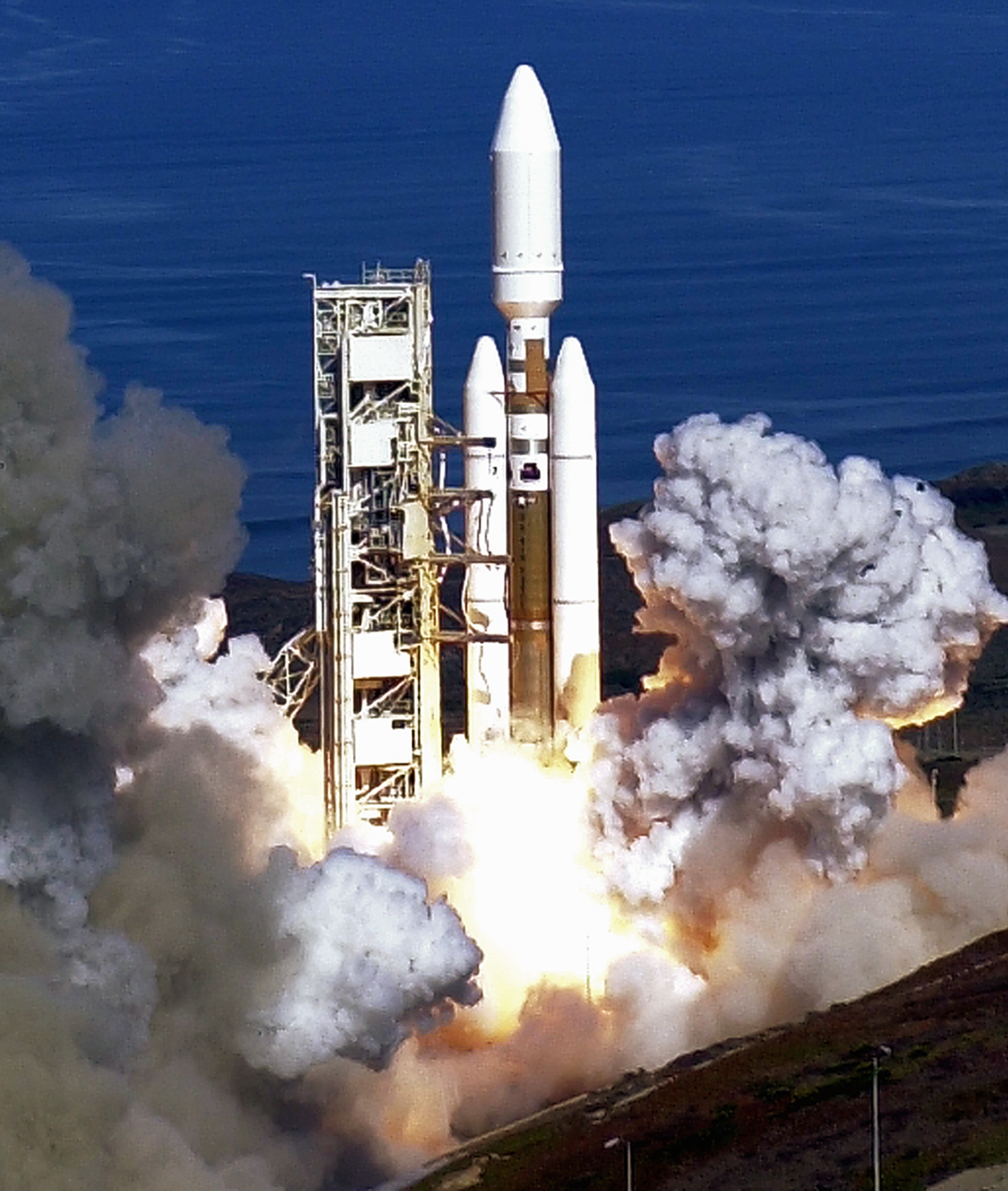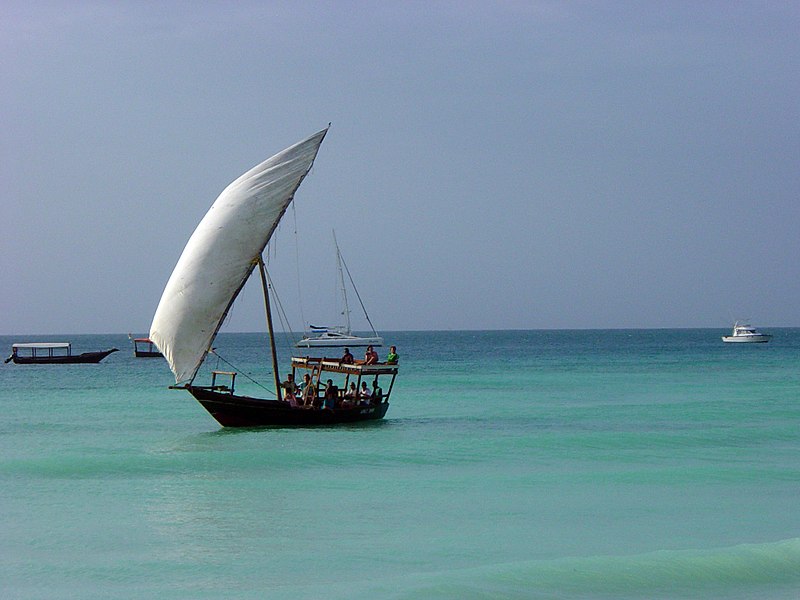SPACE AS AN OCEAN
 Photo U.S. Air Force
Photo U.S. Air ForceLESSONS FROM THE AGE OF EUROPEAN MARINE EXPLORATION FOR THE SPACE AGE.
From the Book "PROTOCOLS" (c) 2012 by American Admiralty Books
American Admiralty Books Safety & Privacy Policies (Attention EU Visitors , possible "cookie" encounter ahead)
THE LONG PAUSE ; BETWEEN THE LONG BOAT AND THE CARAVEL, BETWEEN THE SPACE SHUTTLE AND THE STAR SHIP
| CARAVEL WITH SQUARE SAILS DEPLOYED |
| VIKING LONG BOAT
"Proceedings: Do you think we will live to see a Man to Mars mission?
Capt. Readdy: Without question. If we really wanted to throw money at the problem , I think we could have gone ten years ago. It's no longer a question of technology. At this point , I think we need to focus on advances in propulsion technology rather than spending tens of billions of dollars on a mission that will take the better part of a year to get there and almost the same amount of time to come back. Just as the jet engine eclipsed the propeller in World War II and the rocket engine was the enabling technology for our initial exploration of space , there is going to be another advance in propulsion technology. The science fiction writers , I'm sure, already know what it is. Whatever it is, it will open exploration beyond the Moon."
Naval Institute PROCEEDINGS, Feb. 1997: February 1997; page 55 "Building the Future Now", an interview with Capt. William F. Readdy, USNR; Commander of Space Shuttle Mission STS-79
|
| THE CARAVEL BOAT ESPERANCA OF PORTUGAL, LANTEEN SAILS DEPLOYED |
The long boat was known by many names and found in many cultures. The term as used here does not describe only the traditional and well known boat of Viking fame. The long boat refers to a variety of early vessels that were characterized by a single hull, propulsion by oar or paddle, and if sails were carried, these usually consisted of a single square sail. Such vessels made some incredible voyages. Indeed it is widely accepted that Vikings visited North America in their long boats hundreds of years before Columbus. The long boat underwent a long period of refinement under the hands of many nations. Once wealth began to move on the seas with any regularity distinct differences arose between long boats used for commerce and those used to protect or raid commerce, the first warships. An early version of the long boat purposely built for warfare was the Galley.
 |
| A Trireme among largest and most complex of the Galleys, the long boat at it a high point of development |
The first development that would lead to the evolution of the Caravel would be the lanteen sail. The lanteen sail , is a triangular shaped device similar in appearance to the sail of the popular small recreational sailboat known as the "SUNFISH". The lanteen sail reached its' greatest utility once wedded to a subsurface hull feature such as the extended keel, dagger board, or lee board. the lanteen sail coupled with these submerged hull features allowed a vessel to "tack"before the wind.
 |
| CLASSIC MODERN LANTEEN RIG SAIL AS USED ON VERY SMALL RECREATIONAL SAIL BOATS |
To Tack is to sail at an angle across the wind., allowing a vessel to make actual progress in an upwind direction via zig zag pattern. The lanteen sail also allowed a vessel to sail off at a wide variety of angles from the wind without the necessity to tack. The first vessels to exhibit those features were the Arabian Dhows. But the Arabian Dhows were not destined to explore the great seas, some additional refinements were still needed. They would come from an unexpected quarter.
 |
A modern version of the ancient Dhow
The Portuguese were mostly farmers. It was their princes who led them to sea, a sea they often viewed as hostile. yet at sea these farmers turned sailors would perform most amazing feats. King Diniz was the first to realize that Portugal's future and fortune lay at sea. In 1217 Diniz appointed a Genoese, Manoel Pessagno as admiral of his fleet. Diniz then launched an expedition to the Canary Islands and in order to encourage the shipwright's art, he knighted his foremost shipwrights. To assure his supply of timber King Diniz planted forests. Because there were so few Portuguese seafarers in the beginning Diniz never failed to hire Genoese mariners and shipwrights when needed. The Genoese had a long history of contact with the Arabs, had seen dhows, and adopted the lanteen sail, sometimes mixing the lanteen with square sails for better performance when the wind was astern or "on a run" as modern sailors would describe it. Now they had a patron greatly interested in ship performance improvement. First the Genoese in the employ of the Portuguese and later the Portuguese themselves would improve on the basic designs that had evolved from the dhow. The hull form would be improved for lateral stability, freeboard would be raised , cargo capacities improved, but most importantly the sail plan was improved. Mizzen masts appeared, allowing the sail plan to be split, less sail could be carried in high winds and bent on in light airs. The oarsman, was no longer a crew position. Mariners were now sailors, milking the wind for propulsive power in all weathers. However, the full evolution caravel did not happen over night.
The caravel did not evolve directly from the dhow nor from the more round bottomed merchant ships of the day. Rather the caravel, the prime engine of the early age of maritime exploration evolved from the Dhow by way of humble Portuguese fishing vessels. The lowly fishing vessel had to be able to carry a substantial load , be sea kindly, not too labor intensive, and be able to get back to port before the cargo spoiled. And so it was from a people late to seafaring , and from their most humble vessel designs that the vessel that would link the continents would evolve. when the NINA, the PINTA, and the SANTA MARIA pushed out into the Atlantic they were piloted by a Genoese navigator in the service of Spain who had no real way to accurately compute his longitude, but every confidence that his caravels would carry him to wherever he was bound and back. The humble but technologically superior caravels of Spain and Portugal would blaze the paths to the New World. Eventually they would be displaced by the full rigged ships of England, but had the caravel not appeared on scene when it did, the New World would be a lot newer. The Space Shuttle in its hey day was seen as such an improvement over the Space Capsule that it was sometimes called the "caravel of the space age". But in fact the Space capsules in use prior, and still in use in the Russian and Chinese manned space programs , Space shuttle, and the Space Shuttle's successor are little more than early long boats. With these vessels we have gained valuable experience in space travel, but neither capsule nor shuttle can take us where we need to go, specially beyond our own solar system. We are waiting on the real caravel, perhaps two. In terms of manned exploration and exploitation of our own solar system, our present means of propulsion is sufficient to carry us to Mars and beyond on long and difficult voyages that will rival those of the era of epic voyages that started in 1487. We simply can't get there in a long boat. When the caravel first appeared it wasn't faster that other sailing craft by any order of magnitude, it was its total package of sea keeping, carrying capacity, sail efficiency, and crew comfort that made it suitable for the long haul. We won't be sending crews on two and five year voyages in any ship we can launch from earth. The caravel for the age of exploration of the solar system will be built in space from components the size of the capsules and shuttles we have sent up so far. The first sign that a real caravel is, and all of the subsequent design improvements are, about to arrive will be the construction of an orbital shipyard. And the next wave of solar system exploration will involve flotillas of these built in space craft, not single ships. The long boats won't disappear, they will be a cost effective fleet of ferries and personnel launches for transport to the ship yard and space stations for many decades to come. The real caravel will be built in space. Then the process will begin again with totally different propulsion systems, "the warp drive", that NASA is working on even as we write. But the caravel for the exploration of space beyond our own solar system will also be built in space. We could be in the long boats a very long time. We were before. This time we must foresee that the caravel is coming and be prepared to step on that distant shore. We must be prepared because our maritime experience with new distant shores tells us that lack of preparation can spell death and destruction for us and those we meet. We must prepare in advance this time for first contact with everything from macrobiotic to intelligent life. We had better get this done before we get out of the long boats.
----------------------------------------------------------------------------------------------------------
|
American Admiralty Books Safety & Privacy Policies (Attention EU Visitors , possible "cookie" encounter ahead)



COMMERCIALIZATION OF SPACE BOOKSHELF
No comments:
Post a Comment